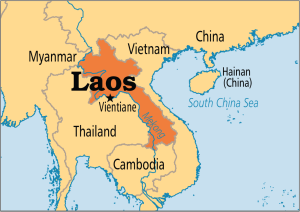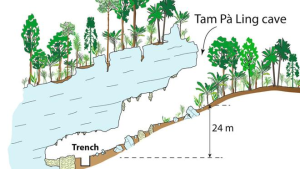Mains – 22nd Nov 23
Rehabilitation of trafficking victims
Why in News?
- The Ministry of Women and Child Development, Government of India, has approved a scheme that aims to provide financial assistance to states and Union Territories to establish protection and rehabilitation homes for victims of trafficking, particularly in states with international borders.
Major Provisions of the Scheme:
- The scheme aims to provide financial aid to states and Union Territories in order to establish protection and rehabilitation homes for victims of trafficking.
- The government has allocated funds from the Nirbhaya Fund to support the strengthening of anti-human trafficking units (AHTUs) in every district across all states and Union Territories.
- The funding has been extended to all states and Union Territories, including AHTUs in Border Guarding Forces like the BSF (Border Security Force) and SSB (Sashastra Seema Bal).
- Presently, there are 788 functional AHTUs, including 30 within Border Guarding Forces, across the country.
| About AHTUs:
· AHTUs are nodal and integrated task forces Units with the mandate to prevent and combat trafficking in persons. · It is the specialised enforcement agency for ensuring effective action against cases of trafficking. · Having trained and sensitised police personnel to improve the enforcement and implementation of the law lies at the very core of the formulation and establishment of AHTUs. |
What is Human Trafficking?
- Human Trafficking is the recruitment, transportation, transfer, harbouring or receipt of people through force, fraud or deception, with the aim of exploiting them for profit.
- Men, women and children of all ages and from all backgrounds can become victims of this crime, which occurs in every region of the world.
- The traffickers often use violence or fraudulent employment agencies and fake promises of education and job opportunities to trick and coerce their victims.
Status of Human Trafficking in India:
- With its large population, economic disparities, and complex social dynamics, India has become a hotspot for various forms of human trafficking.
- According to the National Crime Records Bureau (NCRB) data, 2,189 cases of human trafficking were filed in 2022, involving 6,533 victims.
- Among these victims, 4,062 were female, and 2,471 were male. Notably, 2,877 victims were minors.
- While more underage boys (1,570) were trafficked in 2021 than girls (1,307), the trend was reversed when considering adult victims, with women outnumbering men.
- Telangana, Maharashtra, and Assam had the highest number of cases registered in their respective AHTUs in 2021.
Various Forms of Human Trafficking:
- Forced Labor: Victims are coerced or deceived into working under exploitative conditions, including industries like agriculture, construction, domestic work, and manufacturing.
- Sexual Exploitation: Individuals, particularly women and children, are trafficked for commercial sexual exploitation, including prostitution and pornography.
- Child Trafficking: Children are trafficked for various purposes, including child labor, forced begging, child marriage, adoption scams, and sexual exploitation.
- Bonded Labor: People are trapped in a cycle of debt bondage, where they are forced to work to repay a debt that often continues to increase due to exploitative practices.
- Organ Trafficking: Trafficking of organs involves the illegal trade of organs like kidneys, liver, and corneas for transplantation purposes.
Relevant Laws in India and International Conventions:
- Article 23 and 24 of the Constitution of India:
- Article 23 prohibits human trafficking and begar (forced labour without payment).
- Article 24 forbids employment of children below the age of 14 years in dangerous jobs like factories and mines.
- Indian Penal Code (IPC) Section:
- Section 370 and 370A of IPC provide for comprehensive measures to counter the menace of human trafficking including trafficking of children for exploitation in any form including physical exploitation or any form of sexual exploitation, slavery, servitude, or the forced removal of organs.
- Sections 372 and 373 dealing with selling and buying of girls for the purpose of prostitution.
- Other Legislations:
- The Immoral Traffic (Prevention) Act, 1956 (ITPA) is the premier legislation for prevention of trafficking for commercial sexual exploitation.
- The Bonded Labour System (Abolition) Act, 1976, prohibits systems of labour where people, including children, work under conditions of servitude to pay off debt, and also provides a framework for rehabilitating released labourers.
- The Child Labour (Prohibition and Regulation) Act, 1986, prevents children from partaking in certain employments and regulates the conditions of work for children in other fields.
- The Transplantation of Human Organs and Tissues Act, 1994, makes commercial dealing in human organs a punishable offence.
- Protection of Children from Sexual offences (POCSO) Act, 2012, is a special law to protect children from sexual abuse and exploitation.
- The Juvenile Justice (Care and Protection of Children) Act 2015, which governs laws relating to children alleged and found to be in conflict with law.
- International Convention:
- United Nations Convention on Transnational Organised Crime (UNCTOC) has a Protocol to Prevent, Suppress and Punish Trafficking in Persons, especially Women and Children (India has ratified).
- SAARC Convention on Preventing and Combating Trafficking in Women and Children for Prostitution (India has ratified).
Major Causes of Human Trafficking:
- Poverty, unemployment, and lack of economic opportunities create vulnerability, pushing individuals into desperate situations where they are more likely to be trafficked.
- Deep-rooted gender inequalities, discrimination, and violence against women and girls increase their susceptibility to trafficking.
- Regions affected by political instability, armed conflict, and displacement provide fertile ground for trafficking, as people are displaced and left vulnerable without protection.
- Widespread corruption within law enforcement agencies, immigration authorities, and judicial systems enables traffickers to operate with impunity, making it difficult to identify, investigate, and prosecute cases effectively.
Impacts of Human Trafficking:
- Trafficking victims endure physical and psychological abuse, violence, and trauma. They often suffer from injuries, sexually transmitted infections, malnutrition, and physical exhaustion.
- The psychological impact includes anxiety, depression, post-traumatic stress disorder (PTSD), and a loss of trust in others.
- Human trafficking fundamentally violates the victims’ human rights. It deprives them of their freedom, dignity, and security.
- Trafficked individuals are subjected to harsh working conditions, long hours, and little or no pay. In many cases, victims become trapped in debt bondage, where they are forced to work to repay an ever-increasing debt, making escape from exploitation extremely difficult.
- Human trafficking disrupts the social fabric of communities and families. It tears apart families as individuals are forcibly separated from their loved ones. This disruption leads to loss of social support networks, and strained relationships within communities.
What can be done?
- Enact and enforce robust anti-trafficking laws that criminalize all forms of human trafficking and provide adequate penalties for offenders.
- Enhance training programs for law enforcement agencies, judiciary, and border control officers to identify and respond to trafficking cases effectively.
- Develop advanced data analytics tools and artificial intelligence algorithms to analyse big data sets, identify trafficking trends, and predict potential hotspots.
- India can facilitate international collaboration and knowledge exchange platforms to share innovative approaches, best practices, and success stories in combating human trafficking.
- Foster partnerships between countries, NGOs, academia, and private sectors to jointly develop and implement innovative solutions.
| Role of Technology in Human Trafficking:
· Traffickers have integrated technology into their business model at every stage of the process, from recruiting to exploiting victims. Many children are approached by traffickers on social media. · United Nations Office on Drugs and Crime (UNODC) has identified two types of strategies, “hunting” involving a trafficker actively pursuing a victim, typically on social media and “fishing”, when perpetrators post job advertisements and wait for potential victims to respond. · Technology can be misused by traffickers to launder or transfer illicit profits. · Technology can also have a positive use in helping to combat trafficking, such as by aiding investigations, enhancing prosecutions, raising awareness, and providing services to victims.
United Nations Office on Drugs and Crime (UNODC): · It was established in 1997 and was named as a United Nations Office on Drugs and Crime (UNODC) in 2002. · It acts as the Office for Drug Control and Crime Prevention by combining the United Nations International Drug Control Program (UNDCP) and the Crime Prevention and Criminal Justice Division of the United Nations Office at Vienna. · UNODC is the leading entity within the United Nations system to address the criminal elements of human trafficking. · It provides expertise and knowledge to UN Member States and assists them with the ratification and implementation of the UN Protocol on Trafficking. · International Day Against Drug Abuse and Illicit Trafficking is celebrated every year on 26th June. |
Tam Pa Ling Cave
Why in news?
Tam Pà Ling Cave in the Annamite Mountain range in Northern Laos has recently provided groundbreaking insights into the timeline of human arrival in Southeast Asia.


Finding in Tam Pa Ling Cave
- he discovery of a leg bone fragment, found seven meters deep, indicates that Humans reached the region at least 68,000 years ago, and possibly as long as 86,000 years ago. The evidence from Tam Pà Ling has pushed back the timing of Homo sapiens’ arrival in Southeast Asia.
- Remarkably, a tooth, estimated to be 150,000 years old, was found in the Cave, linking it to the presence of Denisovans, an extinct human relative.
